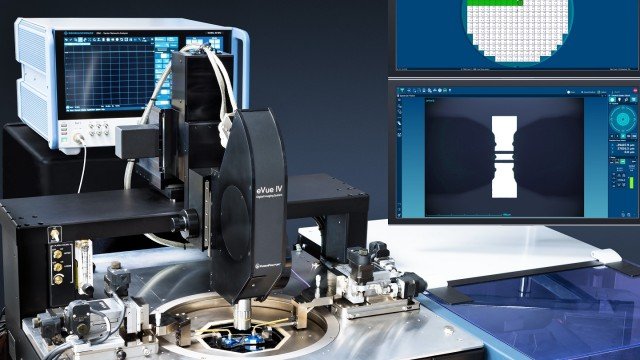5G RF front-end designers aim to ensure proper RF capabilities for frequency coverage and output power while optimizing energy efficiency. An important phase in this process is investigating the RF design, to get feedback on the design as early as possible and assess the performance and capabilities already on the wafer level. Characterizing a DUT in an on-wafer environment requires a measurement system which includes a vector network analyzer (VNA), a probe station, RF probes, cables or adapters, a dedicated calibration method as well as calibration substrates for the particular DUT or application.
To perform these essential measurements, Rohde & Schwarz is supplying the high-end R&S ZNA vector network analyzer, which characterizes all RF qualification parameters at coaxial and waveguide levels, as well as frequency extenders for application ranges above 67 GHz. FormFactor addresses the wafer contact with manual, semi-automated and fully automated probe systems including thermal control, high-frequency probes, probe positioners, and calibration tools. The calibration of the complete test system, including the R&S ZNA, is fully supported in the FormFactor WinCal XE calibration software.
In the test setup, the user has access to all test capabilities of the R&S ZNA thanks to the fully calibrated setup. Generic S-parameter tests allow characterization for filters and active devices, but distortion, gain and intermodulation tests can also be performed to qualify power amplifiers. Frequency translating measurements for mixers with phase characterization across the bandwidth of the device are another example of the supported measurement applications of the joint solution. The fully calibrated setups also allow all results to be directly taken from the VNA without postprocessing as the calibration data are applied directly to the VNA. Frequency extenders from Rohde & Schwarz open up sub-THz frequencies such as D-band, currently in the focus of 6G research. The extenders will be integrated to the probe station to ensure shortest cabling and enable optimal dynamic range while avoiding losses due to cabling to the probe tip.


